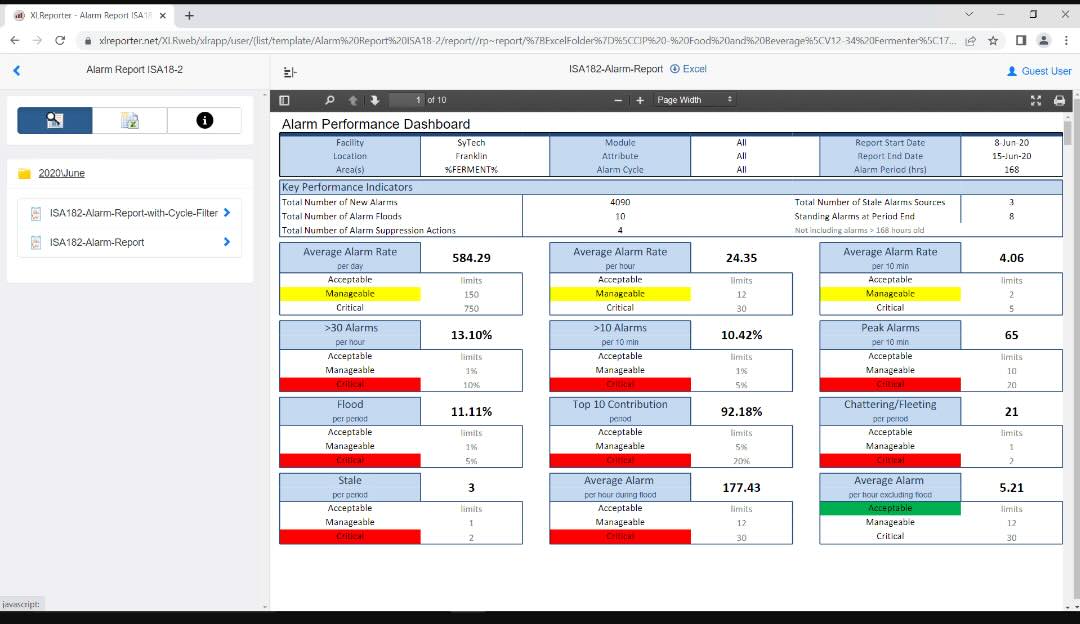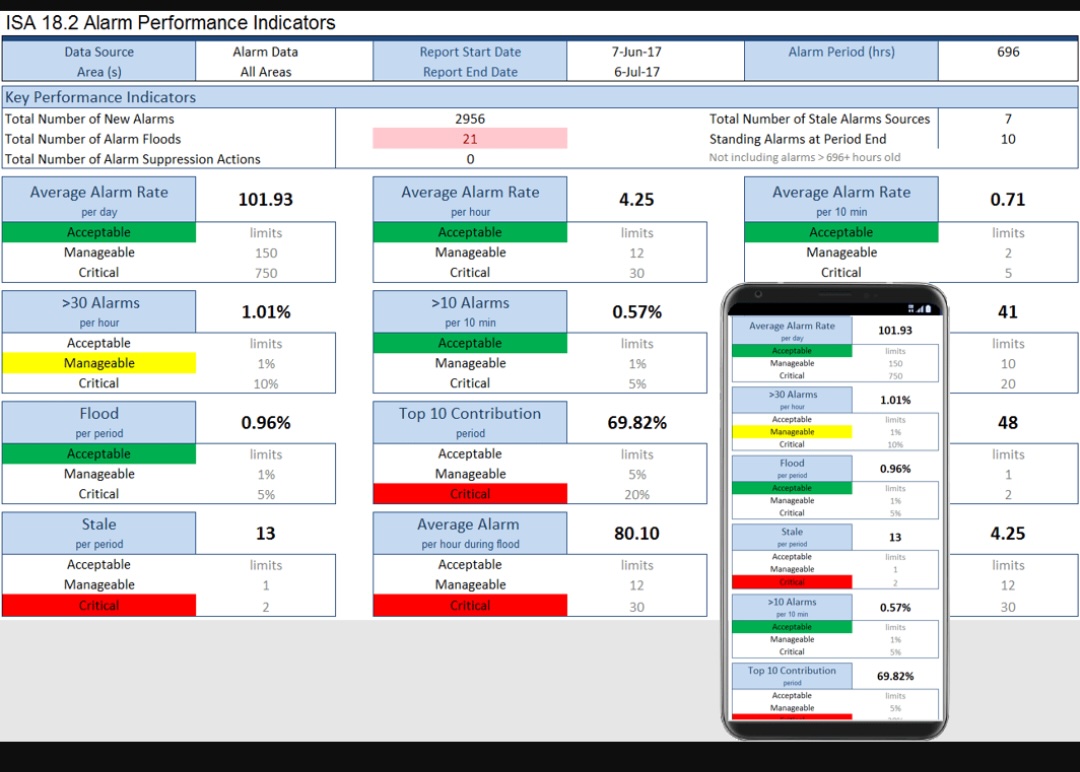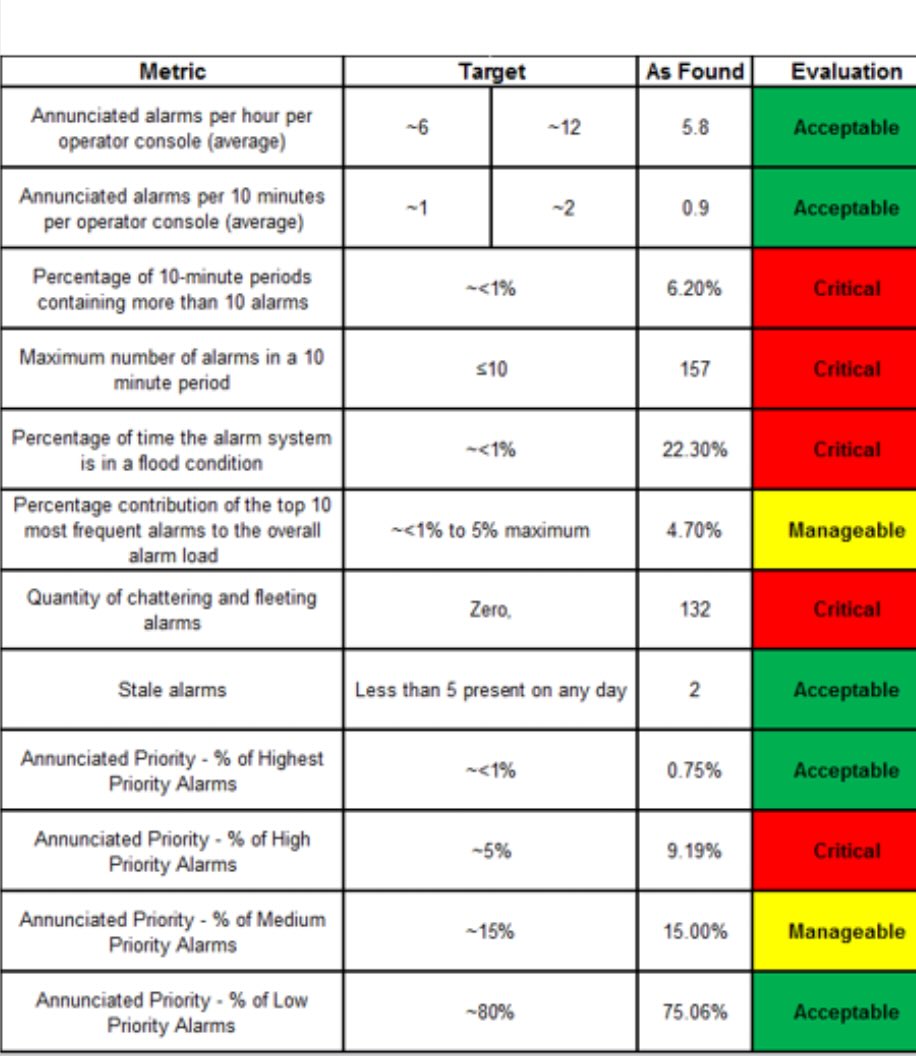Incorporating software that provides greater connectivity and data-driven reports can improve operational efficiencies, reduce unplanned downtime and meet compliance requirements.

Learning Objectives
- Understand the value of real-time production data and how can it affect operations.
- Understand how staffing challenges, how can software integrated with SCADA systems enable operators to take on more proactive, hands-on tasks in the field or on the plant floor?
- Learn how reporting software enables organizations to turn raw process data into actionable information, thereby increasing efficiency and reducing costs.
Analytics insights
Embracing Industry 4.0 technologies such as IIoT, AI, and machine learning is essential for enhancing efficiency, productivity and competitiveness in modern industrial operations.
Capturing real-time production data and implementing SCADA systems for monitoring and optimization are vital for process efficiency, safety and reducing unplanned downtime.
Leveraging historical data analytics enables better forecasting, proactive planning and decision-making, thereby improving operational efficiency and maintaining a competitive edge.
Digital transformation. Industrial Internet of Things (IIoT). Industry 4.0. While they may seem like trending buzzwords, the technologies are critical to operations being efficient and competitive, and reducing unplanned downtime. Every industry strives for maximum efficiency. For advanced operations autonomously capturing production data, the days of the clipboard and manual data analysis are gone.
Digital technology and interconnectivity are driving influential technologies like advanced computing solutions; cloud and remote computing; IoT and connected devices; smart and real-time data sensors; data capture, software analytics and processing; and the adoption of AI and machine learning. To remain competitive — particularly in light of worker shortages — and increase productivity, Industry 4.0 and complementary technology must be embraced.
Operators are being asked to do more work than ever before as many advanced control features are incorporated for process optimization and improve safety. The good news is there are many systems and technologies to aid in this.

Figure 1: Any improvements to an alarm system starts by identifying problem areas. Third-party reporting software can provide filters that help reveal the unknown challenges. Courtesy: SmartSights
Operations and technology
The ultimate goal of adopting modern systems is to have an efficient or maybe even an autonomous process that cuts out excess fat, ballooning costs and wasteful operations. Focus should be on end-to-end process improvement, which will help shape collaboration within the organization. That means investing in training and education, process automation, related hardware and new tools or software. Continuous operational improvement starts with capturing data from machine assets. This data provides immediate insights for both people and systems, enabling them to make better, faster decisions and drive automation.
For example, consider a smart manufacturing plant using data, which is characterized by increasing automation and the employment of smart machines and smart factories. Informed data helps produce goods more productively across the value chain. By collecting additional data from the factory floor and combining that with other enterprise operational data, a smart factory can achieve information transparency and better decisions. Accurate, real-time production data is pivotal to shop floor operations and the effective operation of each machine asset.
Once real-time process information is gathered, the next logical step is to define conditions of concern on those process variables. For example: “Is an oven too hot or a motor spinning too slowly?” or “Is a tank nearing empty or a pressure too high?” or “Are there issues with the centrifugal pumps drawing liquid?”
Supervisory control and data acquisition (SCADA) systems provide for such conditions to be defined and tracked, monitoring process variables and surfacing active conditions to the human-machine interface (HMI). These condition-based events and alarms add another level to optimizing the process — they allow greater situational awareness for plant operators by calling attention to irregularities and suboptimalities.
Real-time process variables and alarm conditions can be captured over time and calculations can be performed to improve planning and offer solutions to detect patterns in the data.

Figure 2: Research has shown that a well-managed alarm system results in production efficiency, product quality and operator effectiveness. Alarm prioritization provides a mechanism for placing a qualitative value of importance of an alarm. The priority usually signifies how quickly the operator should respond to an alarm. Courtesy: SmartSights
Remote alarm notification software
A key theme of Industry 4.0 and smart operations is greater connectivity — increasing connectivity between devices, industrial networks, physical assets and the cloud. Growing connectivity allows for greater process transparency and the added potential for predictive analytics and sentinel alarm conditions.
Smart manufacturing allows potential issues to be addressed before they become problems, but only by extending that connectivity to the final hop — to the people who operate and optimize manufacturing assets. Connecting devices to people and getting the right information (with increased sophistication of modeling) to the right people at the right time is the strength of remote alarm notification software.
Remote monitoring and alarm management enables operators to take on more proactive, hands-on tasks in the field or on the plant floor, without hiring additional staff.
Historization and analytics
The convergence of advanced technologies and data-driven strategies has ushered in a new era of optimization, where historical data analysis plays a pivotal role in achieving accurate forecasting and scheduling. The ability to harness this data effectively can lead to smarter decision-making, improved processes and a competitive edge. Analyzing historical data allows operations management to identify patterns, trends and anomalies that may otherwise go unnoticed. These insights serve as the foundation for creating accurate forecasts and efficient production schedules.
As the past three years have shown, supply chain disruptions and unexpected demand shifts make forecasting more challenging. However, historical data analytics can help plants transition from reactive to proactive planning and keep planning aligned with operations.

Figure 3: A dashboard showing the key performance indicators (KPIs) uses configurable targets to show the health of the alarm system in an “at-a-glance” display. Courtesy: SmartSights
Reporting
Reports provide a visualization of this historized process information and correlate related process variables, compute metrics on that data, and visually graph such data for easier pattern and anomaly detection. These reports are created through third-party software that seamlessly integrates with programmable logic controllers (PLCs), SCADA and historian systems. Advanced reporting solutions can even pull information from remote alarm notification software, allowing further analysis and optimization of condition response times.
Reporting software enables organizations to turn raw process data into actionable information, thereby increasing efficiency and reducing costs. Furthermore, automated reporting solutions streamline regulatory compliance by collecting data from various sources like SCADA, LIMS, manual entry and others. As the data is collected it is summarized as key metrics — flow totals or turbidity threshold analysis. The final output is published into a formatted document accepted by regulatory agencies.
Leveraging aggregated data at the plant level offers economies of scale for managers. With a summation of performance across all machines, larger performance inefficiencies become evident, and managers can develop a deeper understanding of their machine performance, people performance and process performance.
Alarm management
A robust alarm management system enhances operational efficiency and enables timely detection of failures. A comprehensive alarm system provides actionable information to the operator and helps in taking corrective action. Research has shown that a well-managed alarm system results in production efficiency, improved product quality and better operator effectiveness.
Since 1991, alarm management standards have been published and currently the ISA-18.2 and IEC 62682 are the most widely accepted. The standards define a seven-step alarm management cycle program from identification to monitoring and assessment.
A cloud-connected alarm management system provides access to real-time alarms even when working remotely to decrease response times and help reduce unplanned downtime. Alarm audits and reporting provide an efficient means to document and track the history of individual alarms, consequences, response time and the action taken to mitigate the alarms. As this rationalization is performed, continued system-level monitoring and assessment reports validate that these efforts are driving real improvement.
An effective alarm management program can help the processes get closer to an optimal operating point resulting in lower production costs, higher quality, greater throughput and safer operations.
Continuous improvement
The fourth industrial revolution, rapid globalization, technological advancements, changing consumer preferences and evolving government policies are reshaping industries. Trying to meet these challenges with manually intensive processes and outdated technology is difficult. Leveraging advanced technology such as real-time alarms and automated processes helps operations increase productivity and efficiency while reducing costs.
Prioritizing operational excellence not only fosters growth but also positions organizations for continued success in an ever-evolving business landscape.
Cody P. Bann is director of engineering at SmartSights; David Nolan is senior application engineer at SmartSights. Edited by Chris Vavra, senior editor, Control Engineering, WTWH Media, cvavra@wtwhmedia.com.
MORE ANSWERS
Keywords: digital transformation, real-time data, data insights
CONSIDER THIS
How has real-time monitoring helped your facility?
Do you have experience and expertise with the topics mentioned in this content? You should consider contributing to our WTWH Media editorial team and getting the recognition you and your company deserve. Click here to start this process.

